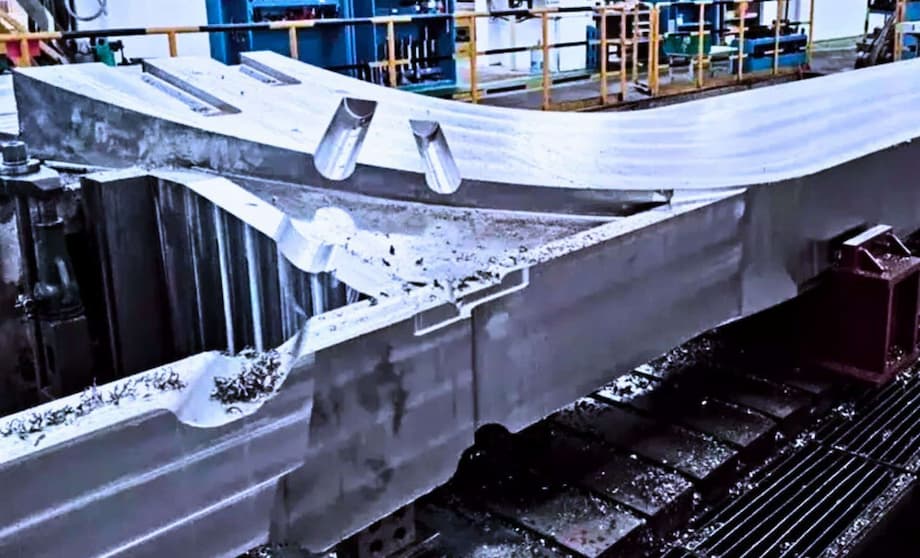China’s Super Steel Breakthrough: A New Era for Nuclear Fusion
In a feat once deemed “absolutely impossible” by international experts, Chinese scientists have developed a revolutionary steel alloy—CHSN01—that is redefining what’s possible in nuclear fusion technology. This super steel, engineered to survive the crushing magnetic forces and near-absolute zero temperatures inside a fusion reactor, is already being deployed in China’s Burning Plasma Experiment Superconducting Tokamak (BEST), a reactor designed not just for research but for commercial power production. The implications of this breakthrough extend far beyond fusion, promising advances in medical imaging, transportation, and even space exploration.
- China’s Super Steel Breakthrough: A New Era for Nuclear Fusion
- Why Fusion Reactors Need Super Steel
- Inside the CHSN01 Breakthrough: Science and Engineering
- From Skepticism to Success: The Human Story Behind CHSN01
- How CHSN01 Changes Fusion Reactor Design
- Beyond Fusion: Wider Applications and Global Impact
- Global Reactions and the Race for Fusion Materials
- In Summary
Why Fusion Reactors Need Super Steel
Nuclear fusion, the process that powers the Sun, holds the promise of virtually limitless, clean energy. Fusion reactors aim to replicate this process on Earth by fusing hydrogen isotopes at temperatures exceeding 100 million degrees Celsius. However, containing such a reaction requires powerful superconducting magnets, which must operate at temperatures as low as minus 269°C (just above absolute zero) and withstand magnetic fields up to 20 Tesla—nearly double the strength used in the world’s largest fusion experiment, ITER, in France.
The challenge is immense: most metals become brittle and lose their ductility at such low temperatures, while the intense magnetic forces threaten to tear them apart. In 2011, ITER itself suffered a major setback when its cryogenic steel became brittle during testing, highlighting the global struggle to find a material that could endure both extremes.
The Limits of Existing Materials
For decades, fusion projects have relied on specialized stainless steels like 316LN and JK2LB, which perform well at cryogenic temperatures but reach their limits at yield strengths of 0.9–1.1 gigapascals (GPa) and magnetic fields of around 11.8 Tesla. These constraints force reactor designs to be large and expensive, limiting the practicality and scalability of fusion power.
Chinese planners, determined to build smaller, more efficient, and commercially viable reactors, realized they needed a material that could survive far higher stresses without cracking. This realization sparked a 12-year sprint in materials science that would culminate in the creation of CHSN01.
Inside the CHSN01 Breakthrough: Science and Engineering
CHSN01, or China High-Strength Low-Temperature Steel No. 1, is the product of meticulous engineering and materials science. The alloy’s development began with Nitronic-50, a nitrogen-strengthened austenitic steel, as its base. Engineers then made a series of critical adjustments:
- Ultra-low carbon content: Reduced to below 0.01 percent to prevent the formation of brittle carbides during years of service at 4 K (minus 269°C).
- Elevated nitrogen and nickel: Nitrogen was increased to about 0.30 percent and nickel slightly raised, ensuring the steel remains tough and ductile even at cryogenic temperatures.
- Vanadium addition: A trace of vanadium was introduced, forming vanadium-nitride particles that pin dislocations and boost strength without sacrificing toughness.
- Strict impurity controls: Oxygen, phosphorus, and sulfur were all kept below 0.02 percent, eliminating crack-initiating inclusions.
These subtle but crucial tweaks resulted in a steel that, at 4.2 K, can sustain about 1.5 GPa of yield stress while stretching more than 30 percent before fracture—roughly 40 percent stronger than the 316LN jackets used in ITER, yet just as crack-resistant.
Fatigue Resistance and Longevity
Fusion reactors are not static machines; their magnets pulse on and off tens of thousands of times over their operational life. CHSN01’s fatigue resistance was rigorously tested at cryogenic temperatures, with results showing it can reliably perform even with initial flaws, providing inspectors with clear criteria for nondestructive testing. Finite element models and Paris-law fatigue crack growth analysis demonstrated that CHSN01 jackets can start with flaws up to 6 mm²—well above the detection limits of modern inspection techniques—and still survive 60,000 plasma pulses, the expected lifetime of the BEST reactor.
This durability means fabricators no longer need to over-polish or oversize the conductors, reducing weight, cost, and assembly time. It also allows for higher magnetic fields, which in turn enable more compact and efficient reactor designs.
From Skepticism to Success: The Human Story Behind CHSN01
The journey to CHSN01 was not without setbacks and skepticism. When Chinese researchers first presented their early results at international conferences, many foreign experts doubted the need for a new alloy, believing that the existing 316LN steel was already at the limit of what was possible. Progress was slow until 2020, when Zhao Zhongxian, a celebrated cryogenic physics expert and winner of China’s top science award, joined the project. His leadership and vision helped reshape the team’s approach, leading to a breakthrough in both the alloy’s composition and the standards it needed to meet.
By 2021, China had set its own ambitious benchmarks: a yield strength of 1,500 MPa and more than 25 percent elongation at cryogenic temperatures. Two years later, CHSN01 was confirmed to meet these standards, with tests showing it could withstand 20 Tesla magnetic fields and 1,300 MPa stress without failure. By May 2023, over 500 tonnes of CHSN01 had been installed in the BEST reactor’s conductor jackets alone.
Expert Perspectives
Li Laifeng, a researcher at the Chinese Academy of Sciences, emphasized the significance of this achievement:
“Developing next-generation cryogenic steel is essential for the success of China’s compact fusion energy experimental devices. CHSN01 is not just a laboratory curiosity—it’s ready for industry.”
Fusion expert Li Jiangang echoed the sentiment, calling advanced steel development “essential” for the future of fusion power.
How CHSN01 Changes Fusion Reactor Design
The impact of CHSN01 on fusion reactor design is profound. With its superior strength and toughness, CHSN01 allows for:
- Higher magnetic fields: Enabling up to 20 Tesla, which increases plasma confining pressure and allows for more compact, modular reactors.
- Longer operational lifespans: Fatigue resistance ensures the steel can handle the repeated pulsing of fusion magnets over decades.
- Reduced weight and cost: Stronger jackets mean less material is needed, streamlining construction and lowering expenses.
- Improved safety and reliability: The ability to tolerate larger initial flaws without risk of catastrophic failure simplifies manufacturing and inspection.
These advances mean that future fusion reactors can be smaller, cheaper, and more efficient—key factors in making fusion power a practical reality.
BEST vs. ITER: A New Benchmark
While ITER in France is the world’s largest fusion experiment, it is designed purely for research and will not generate electricity. China’s BEST reactor, by contrast, is built with commercial power production in mind. This places even greater demands on the materials used, as they must last longer and perform under more challenging conditions. CHSN01’s success in meeting these requirements sets a new benchmark for fusion materials worldwide.
Beyond Fusion: Wider Applications and Global Impact
The significance of CHSN01 extends far beyond fusion reactors. Its unique combination of strength, ductility, and fatigue resistance at cryogenic temperatures makes it attractive for a range of high-tech applications:
- MRI machines: Stronger, more reliable superconducting jackets could reduce magnet size and maintenance needs.
- Particle accelerators: Enhanced durability and performance in extreme environments.
- Maglev trains: Improved safety and efficiency for high-speed transportation.
- Quantum computing refrigeration: Tougher materials for dilution refrigerators operating near absolute zero.
- Deep-space exploration: Components that can survive the harshest conditions in space.
China’s ability to produce CHSN01 domestically also reduces reliance on imported high-grade steels, giving the country a strategic advantage in advanced technology sectors.
Global Reactions and the Race for Fusion Materials
The unveiling of CHSN01 has triggered a global response. Fusion scientists worldwide are now reassessing their own material strategies, with some calling for renewed investment in metallurgy and materials science. As one fusion engineer put it:
“Fusion often grabs headlines with record plasma shots or exotic reactor concepts. Yet history shows that big energy technologies live or die on materials science. By pushing cryogenic stainless steel into the 1.5 GPa class without sacrificing toughness, Chinese researchers have supplied the mechanical keystone that high-field magnets were missing.”
With the BEST reactor aiming for first plasma in 2027 and a power output target of 40–200 MW, the world will be watching closely. If successful, CHSN01 could become the new global standard for fusion reactor construction—and perhaps for other industries facing the cold-plus-stress dilemma.
In Summary
- China’s CHSN01 super steel is a breakthrough alloy designed to withstand the extreme cold and magnetic forces inside nuclear fusion reactors.
- CHSN01 enables higher magnetic fields (up to 20 Tesla), greater strength (1,500 MPa yield), and superior fatigue resistance at cryogenic temperatures.
- The alloy is already being used in China’s BEST fusion reactor, which targets commercial power production and is expected to be completed by 2027.
- CHSN01’s development overcame international skepticism and sets a new benchmark for fusion materials worldwide.
- Beyond fusion, CHSN01 has potential applications in MRI machines, particle accelerators, maglev trains, and space exploration.
- The breakthrough has sparked a global race in materials science, with implications for the future of clean energy and advanced technology.












